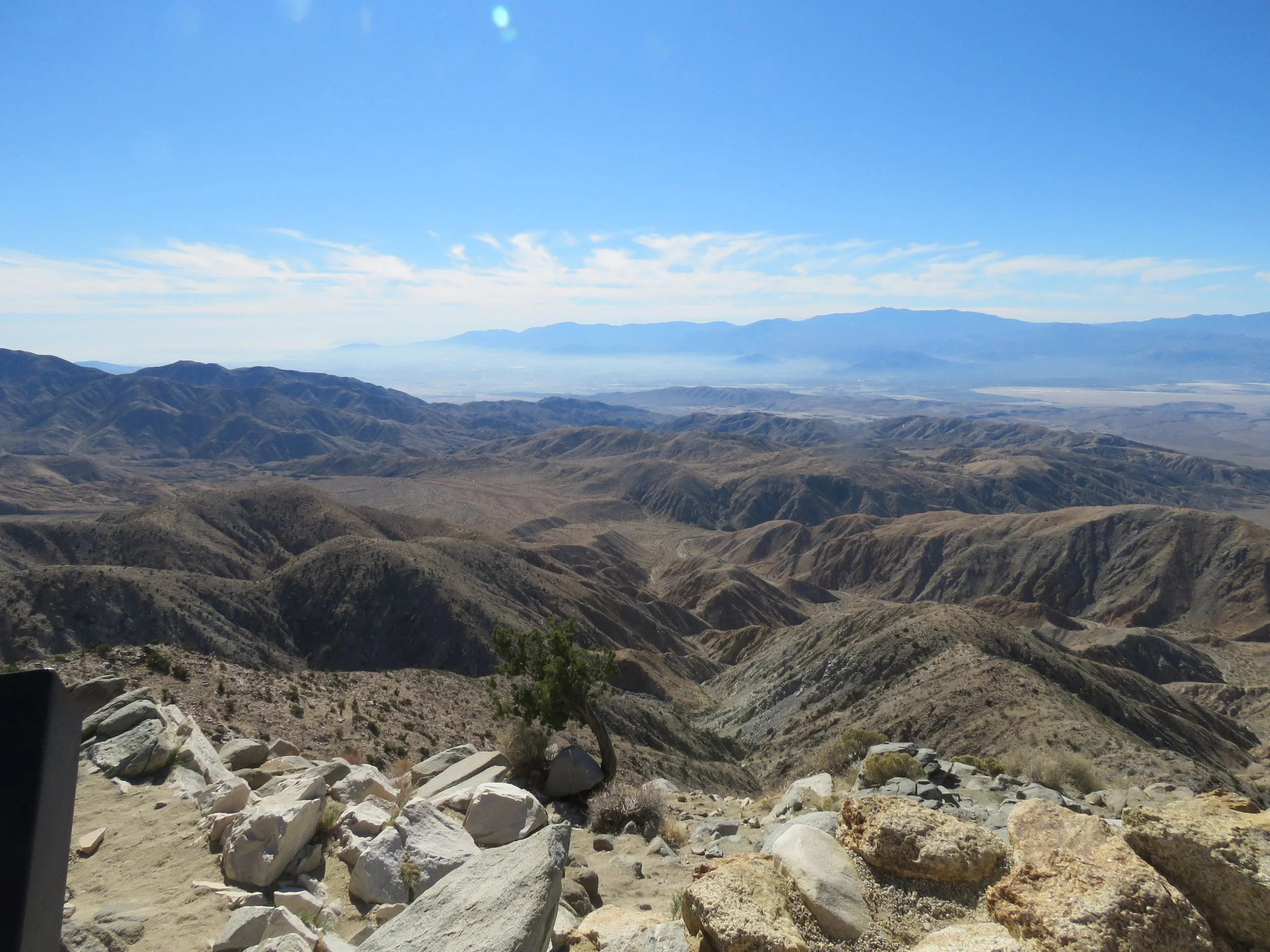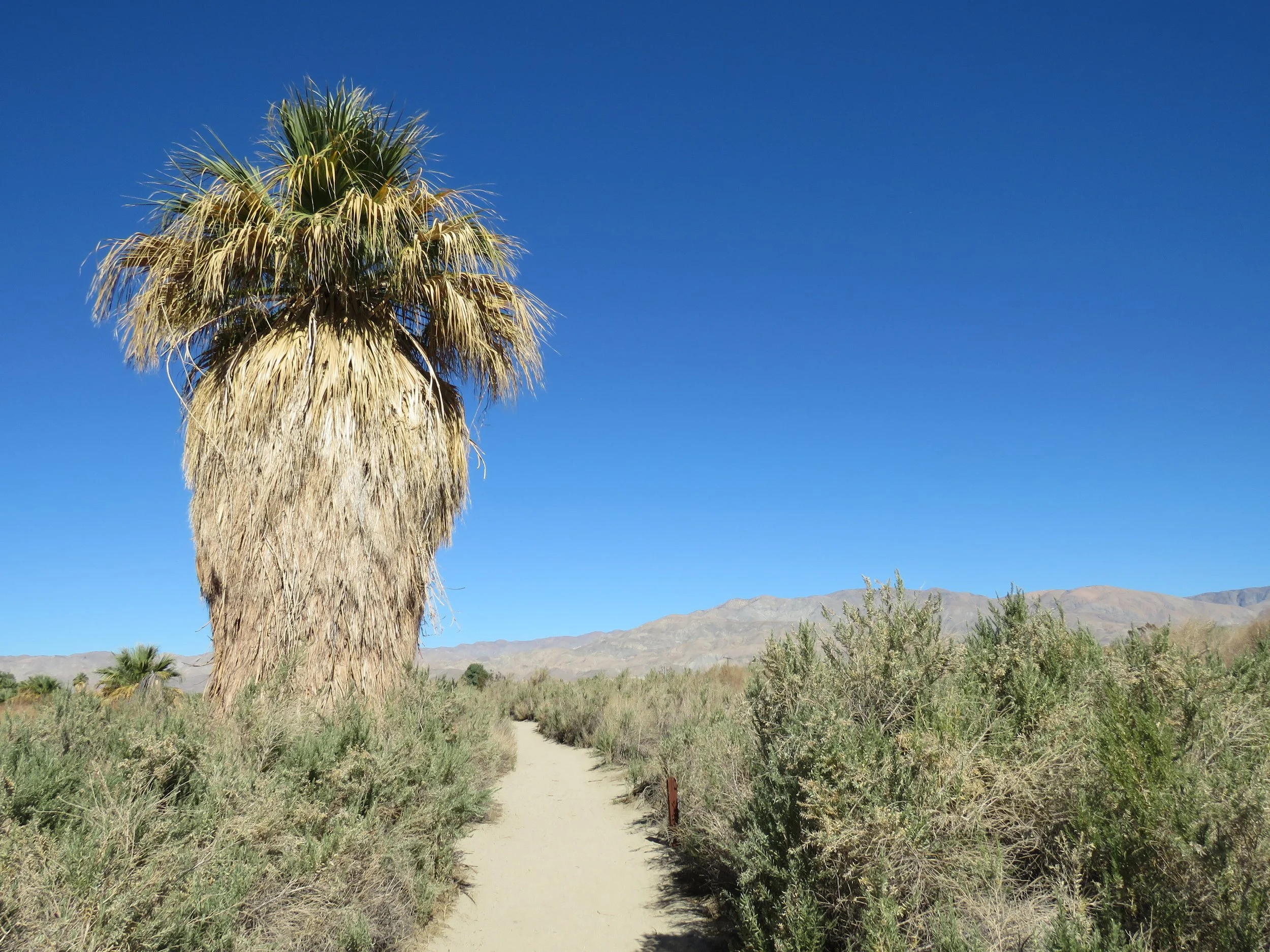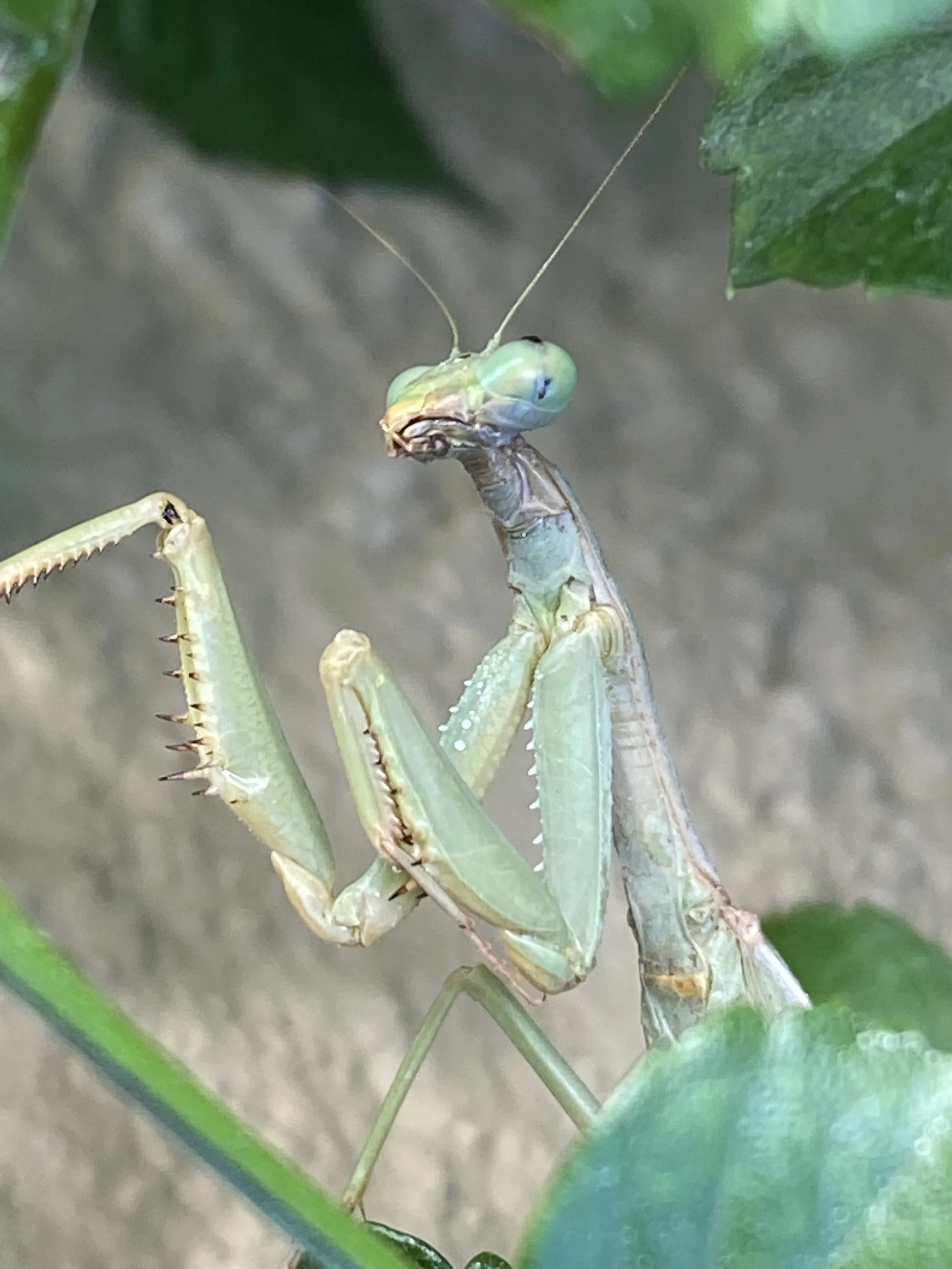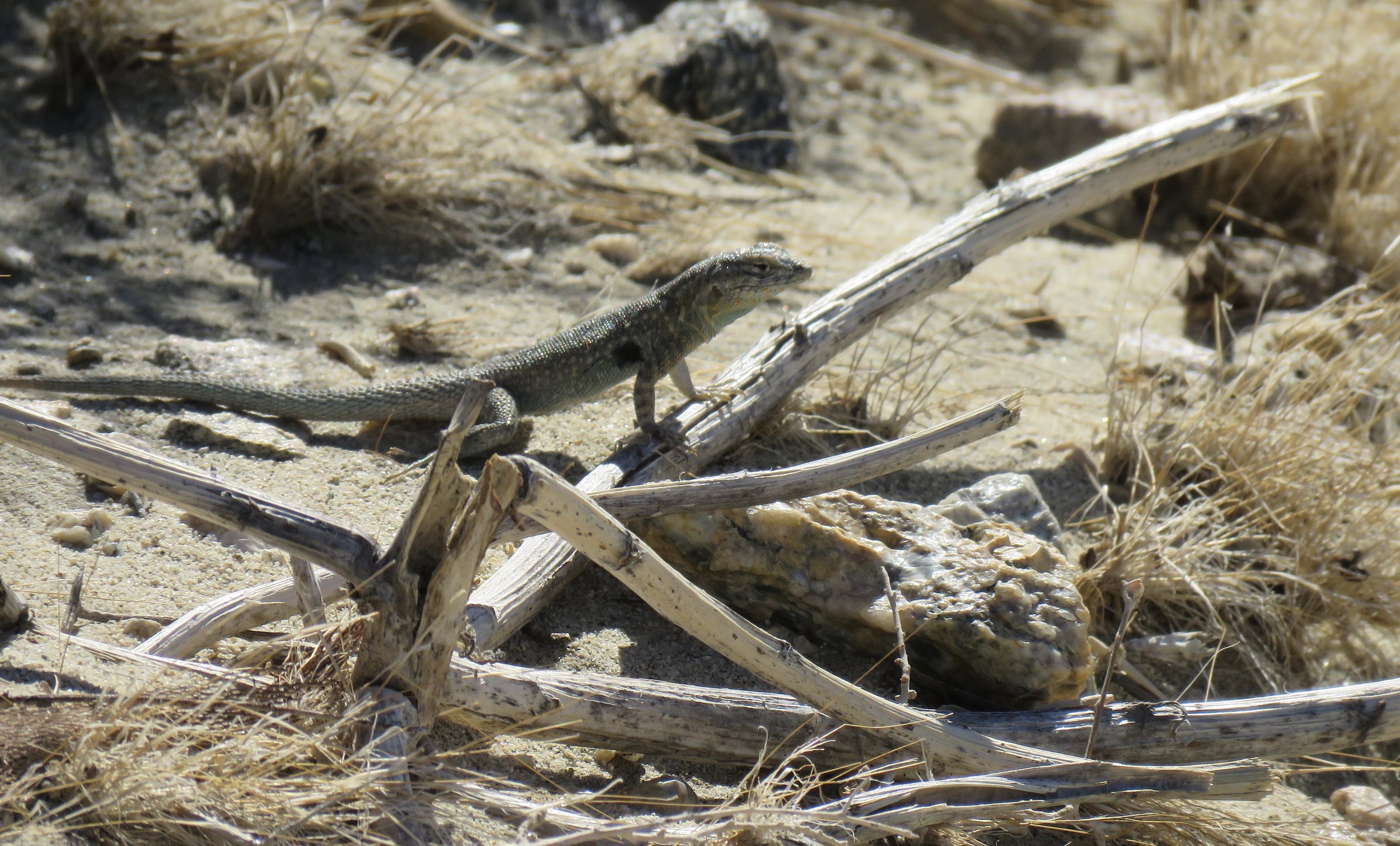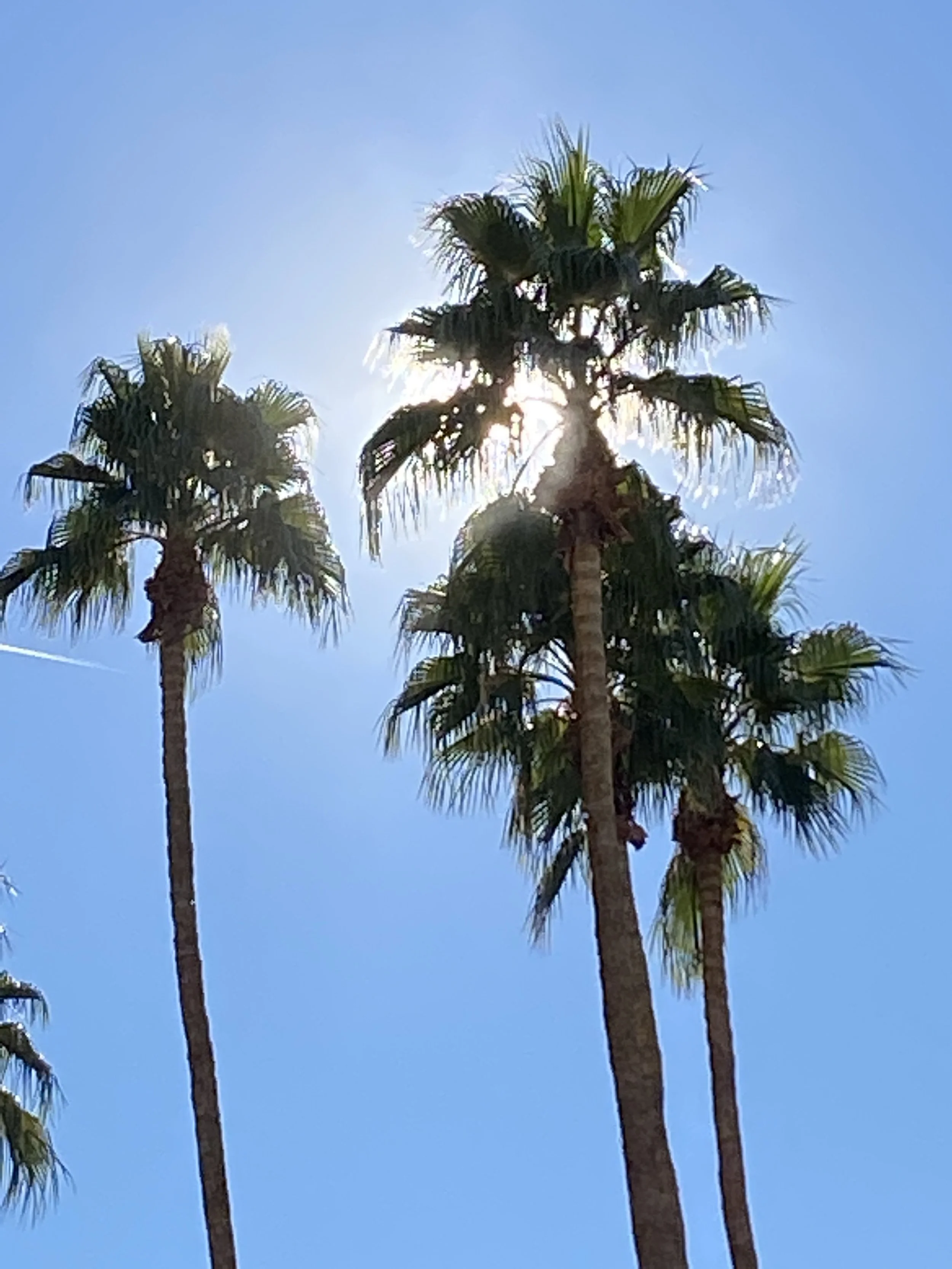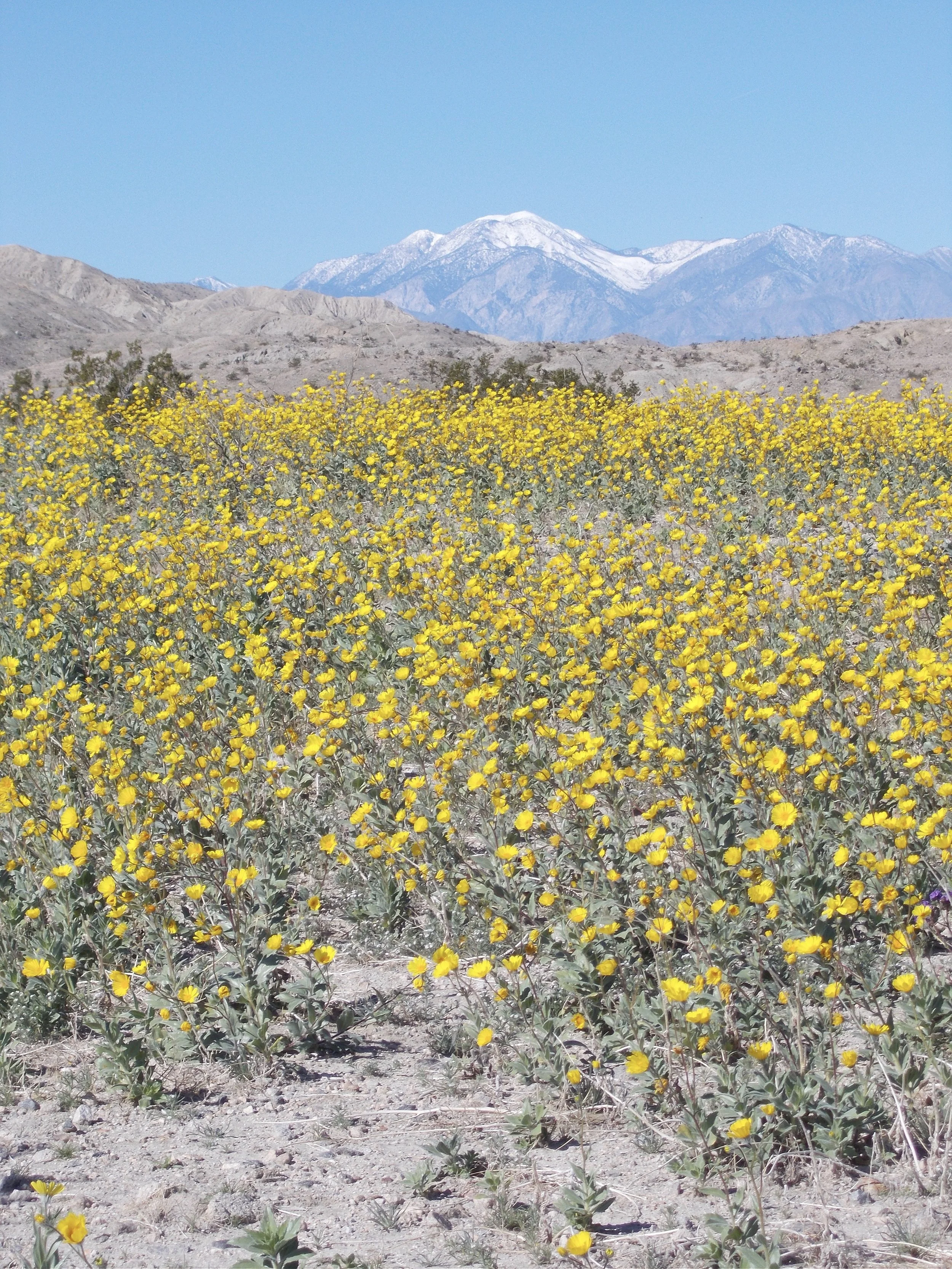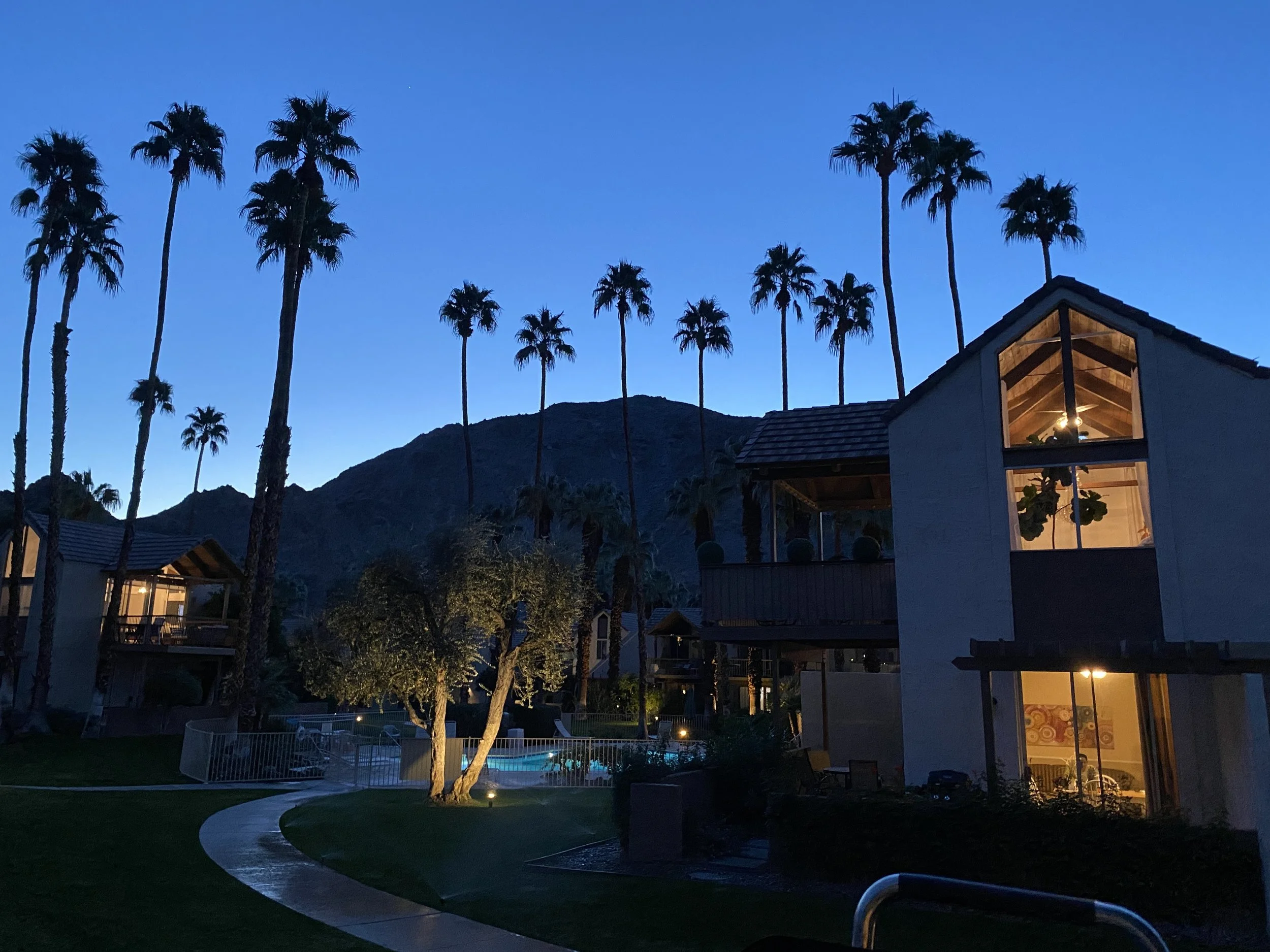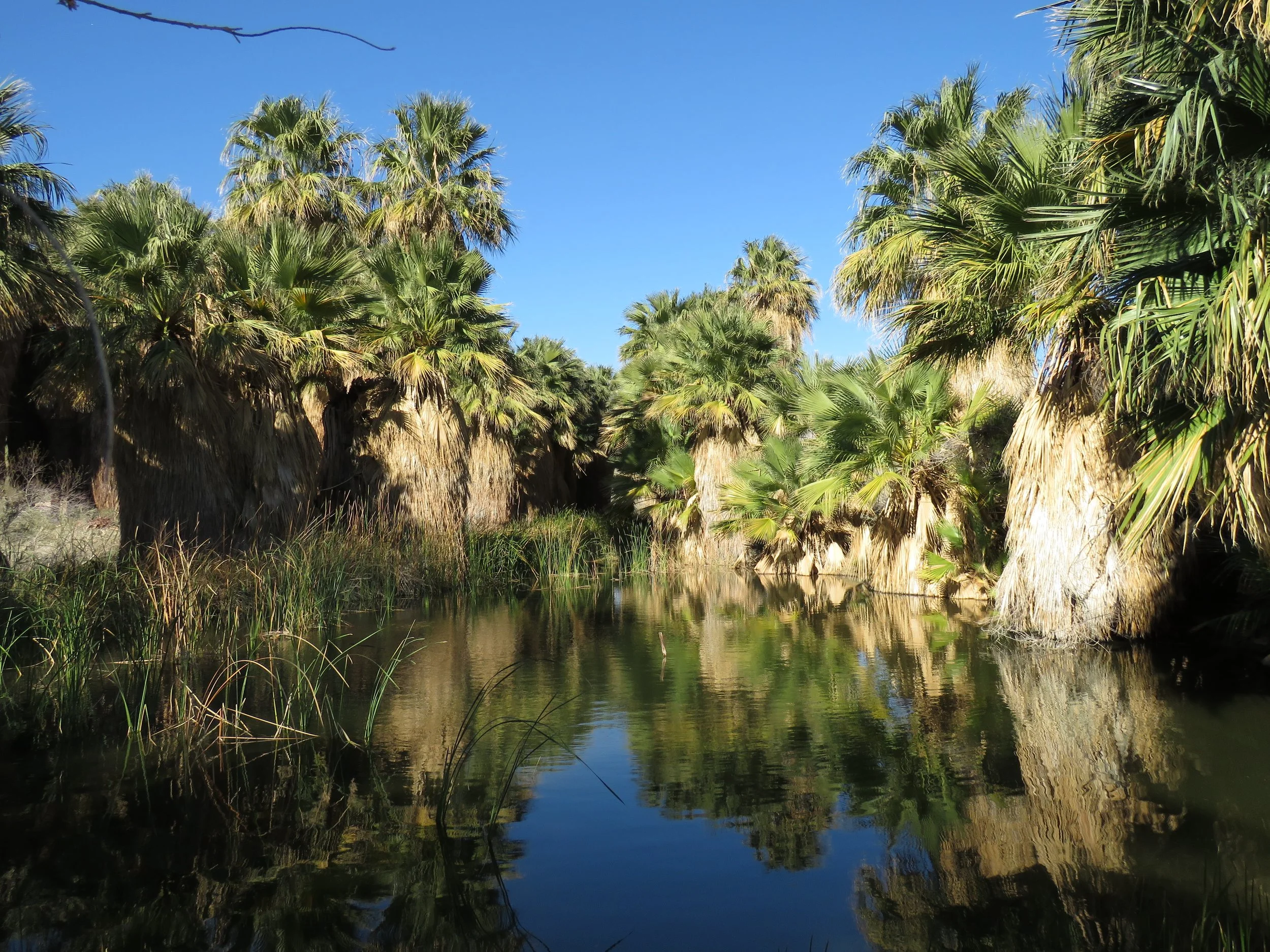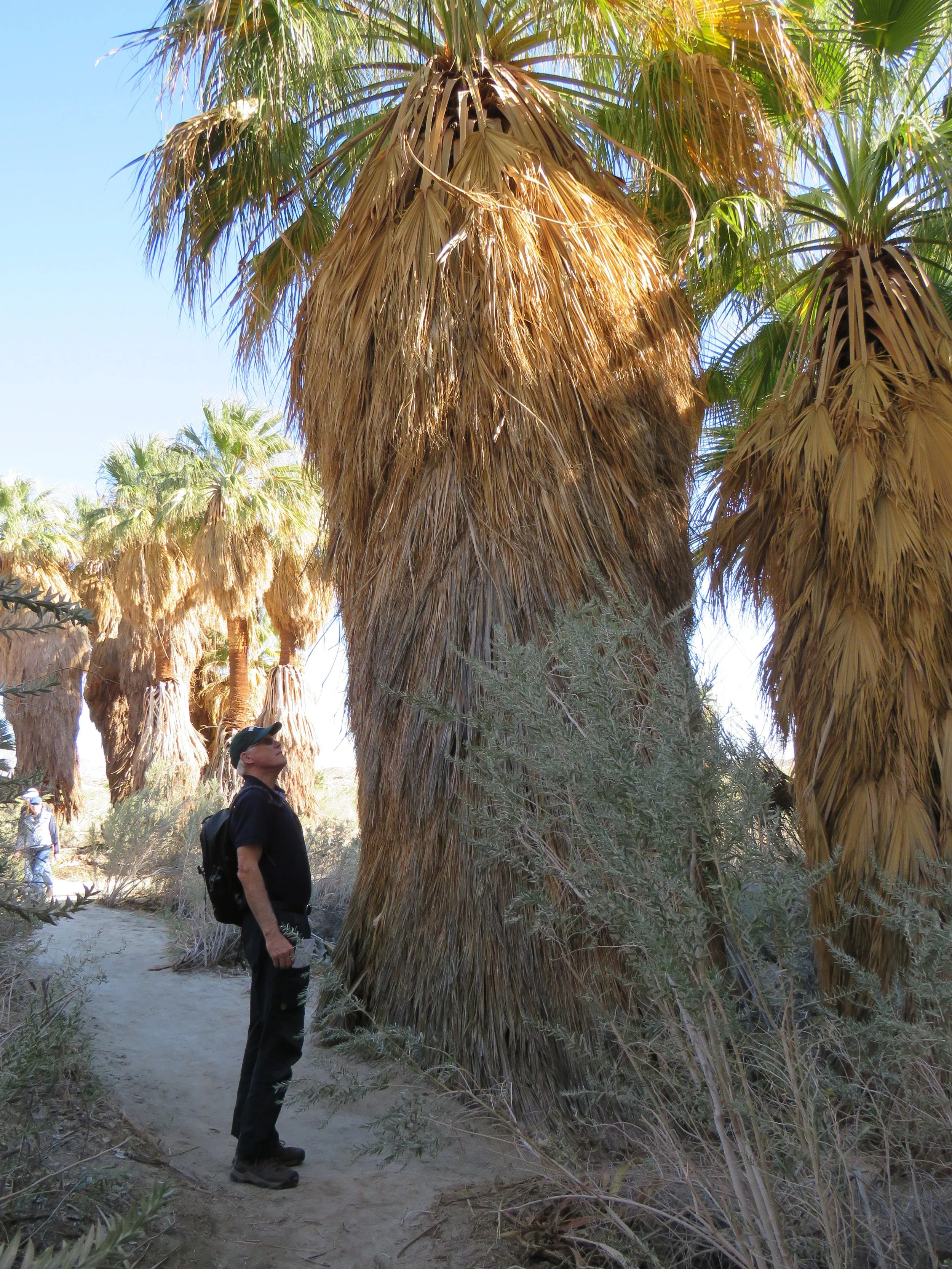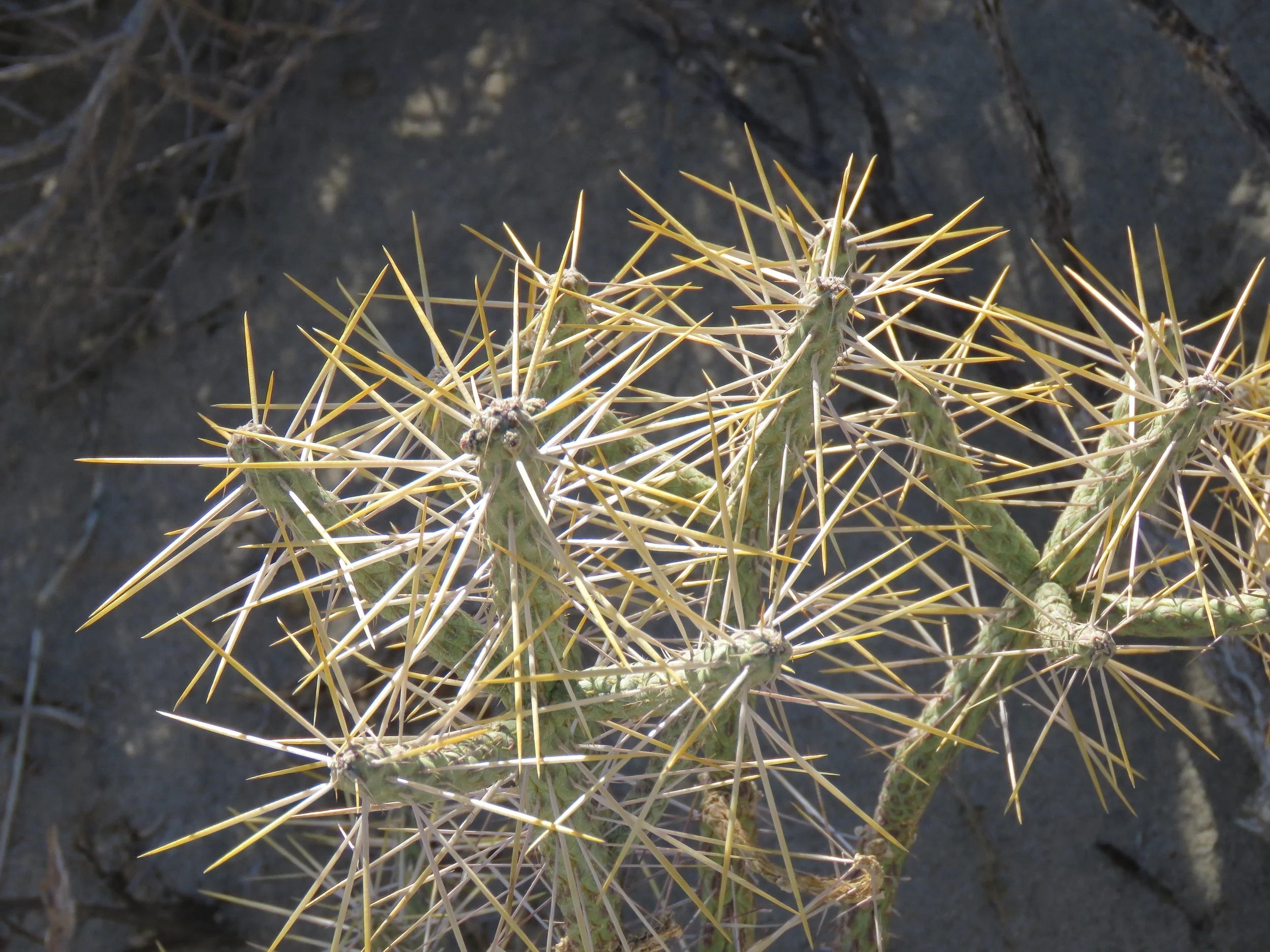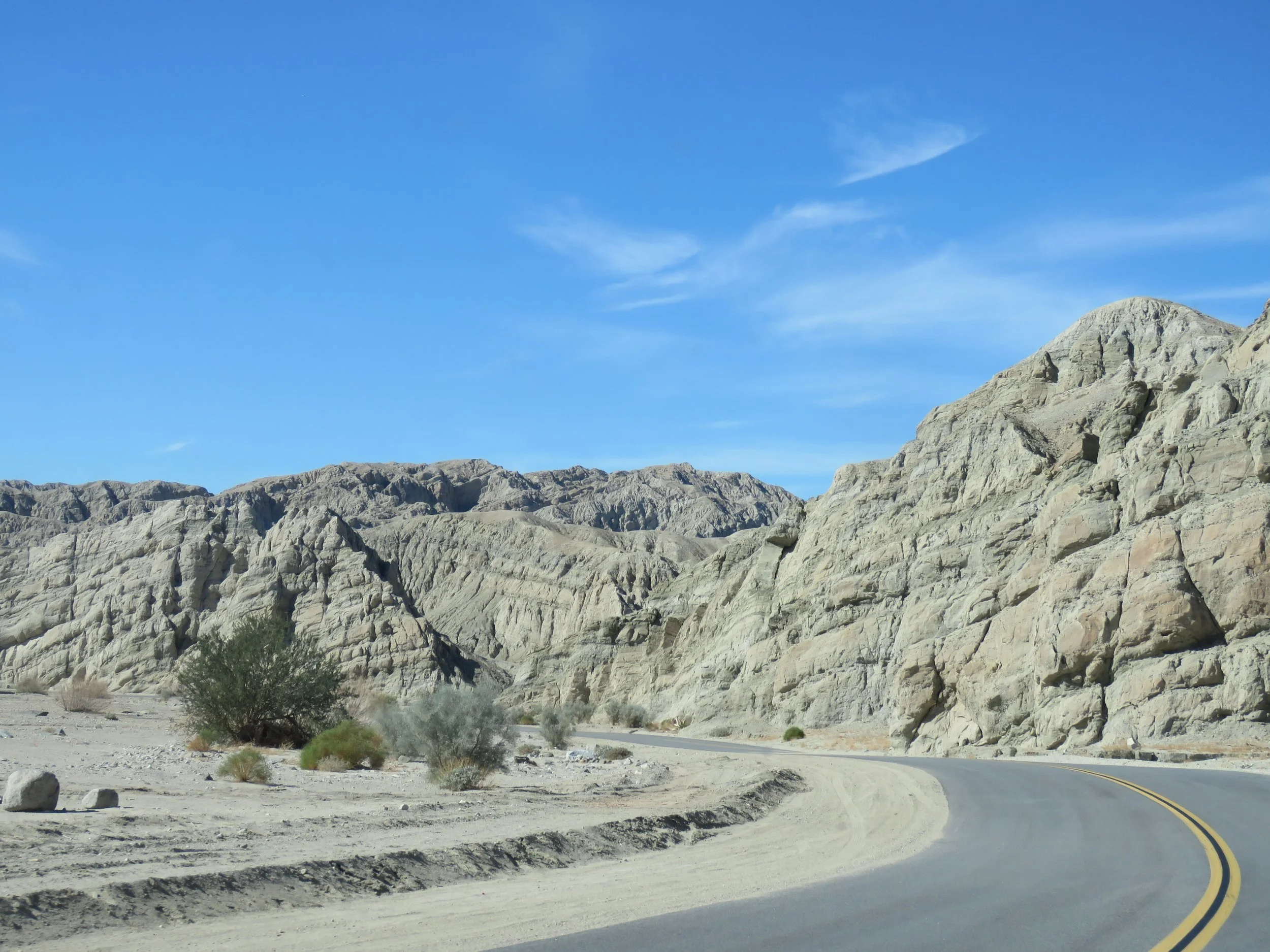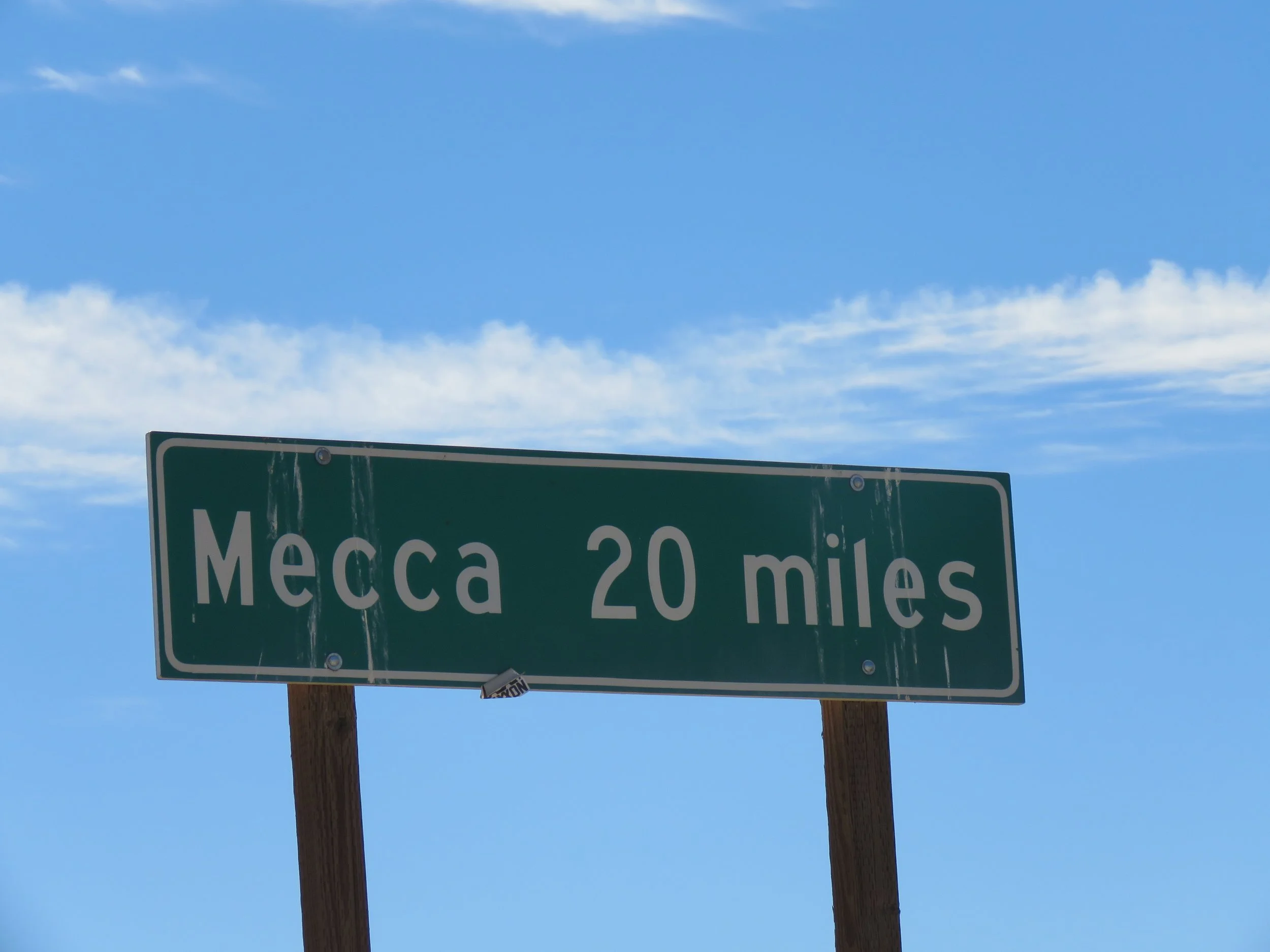A California Fan Palm
So many tiny critters live in the desert.
January on Salt Spring Island is usually milder than anywhere else in Canada. Often, we did not even have snow all winter and, if we did, it was only for a short time. But winters still bring lots of rain, sleet and lower temperatures to the Pacific Northwest.
Several times, we’ve been able to enjoy the perfect weather in January in southern California. We used to live in San Francisco when Kees went to college there. But further south, and just inland, is Palm Springs in the Coachella Valley.
This valley is a strange place. Barren, sandy hills rise sharply against brilliant blue sky. Endless scrub brush covers the valley floor. Towns like Palm Springs, Desert Hot Springs, Sky Valley, Indio, Palm Desert, Cathedral City and many more have grown into almost one large urban sprawl. However, the sprawl is low and the same colour as the desert. Even shopping malls must have a building code so that everything blends nicely into the natural environment. And there is still lots of empty land left all around. Even when you stand on the edge of the foothills surrounding the valley and look down, it is hard to see how populated it is. There are no highrises. The terracotta roofs and palm tree lined boulevards give it an airy, relaxed feeling. I call it Pleasantville.
Where’s Waldo?
Mexican Fan Palms
Towering palm trees are everywhere. Funny enough, the tall Mexican Fan palms are not native and have all been introduced. The Santa Anna winds come howling down the mountains regularly. But the clear blue skies, the sun sets, the wild flowers, all make for a wonderful stay in this desert environment. Snow birds and movie stars make this area their home for good reason. There are lots of retirement communities and elderly care facilities, and I can’t blame them for wanting to be in this great climate in winter.
It feels a bit artificial, all these homes and facilities in what should be a desolate desert. I cringe when I see the golf courses and think of the water they use - water that should not be used to grow grass in the desert. When you drive around, it is hard to know where a bank, or even a Walmart, is for they have no big signs and even the malls blend into the landscape. But is IS a beautiful and comfortable place to be and nowadays endless wind and solar farms provide this valley and the greater L.A. area with renewable energy.
Desert in bloom.
We have flown into Palm Springs, picked up a rental car at the airport, drove to Sky Valley, perhaps a 30 minute drive by the light of a gigantic moon hanging low over the desert. Our rental that time was a park model mobile home: small but with a kitchen, sitting area, bathroom and bedroom. Best of all, it was in a gated resort with several gorgeous swimming pools that are filled by mineral hot springs.
This time we found a condo on AirBnB. During Covid we don’t feel comfortable flying so we drove south in our bubble-on-wheels and arrived in our condo to stay for two winter months. Flowers are in abundance everywhere. It’s mostly 25ºC every day with blue skies.
Kees hikes each day in desert trail areas and nature preserves. One of our favourite areas is an amazing palm grove, an oasis, at Coachella Valley Preserve.
The Coachella Valley Oasis
There are many trails to chose from, short loops and long desert hikes. Of course it’s essential here to bring lots of water, wear a hat and sunscreen. The oasis at this nature reserve consists of towering California Fan Palms. They are solid and grow closely together in the swampy oasis. Having driven through endless dry, sandy desert, I marvelled out loud about the presence of water in the desert.
“Well,” said the volunteer park ranger, “that’s because of the cracks in the earth here. Water comes up from underground and is collected in the canyons along these cracks. You are standing on top of the San Andreas Fault here.” And she pointed to my feet.
“What?” I almost jumped up, wanting to get away from that threat.
Having lived in California for two years, we had never felt an earthquake here but, ironically, we did have one (3.9) in the first few days this time.
The San Andreas Fault runs through southern California and is invisible in many places but very obvious in others. In the Coachella Valley is is recognizable by the tall palms growing in the oasis of the otherwise dry desert. The palms are heavy with small, dark nut clusters which the native people used to grind into flour to bake tortillas. As we hiked some of the trails, and climbed to viewpoints, we spotted a quick lizard, a snake sunning himself on the rocks and listened to the wild haunting tune of a coyote. The days of gold rush, cowboys and stagecoaches are not far in the past here.
We also hiked desert trails just south of Palm Desert, in Santa Rosa and San Jacinto Mountains. Many of these protected nature reserves have visitors centers and trails are usually free of charge to hikers.
The road to Mecca.
On the map of southern California we noticed a huge lake: the Salton Sea. Curious, we followed the roads to get there. The closest town was… Mecca! The dry, earth coloured canyons did remind me of Saudi Arabia. Past Mecca, date palm plantations, endless fields of grapevines, strawberries and artichokes lined the road until we came to this inland sea. The prehistoric Salton Basin is one of the lowest points on earth (-226.4′). It filled with water when, in 1905, the Colorado River flooded at a record level. Now, the water is extremely salty and apparently toxic. Despite this, it is an important wildlife and birding area. You would think that treating and protecting this water is of vital importance in this arid area so close to major urban areas. The glistening water is beautiful in the desert, you cannot see the end of the sea. But it is sad that towns along its shores are now ghost towns and that you cannot swim in the inviting water.
Salton Sea
Resources:
https://www.cnlm.org/portfolio_page/coachella-valley/
https://www.blm.gov/programs/national-conservation-lands/california/santa-rosa-and-san-jacinto-mountains-national-monument
